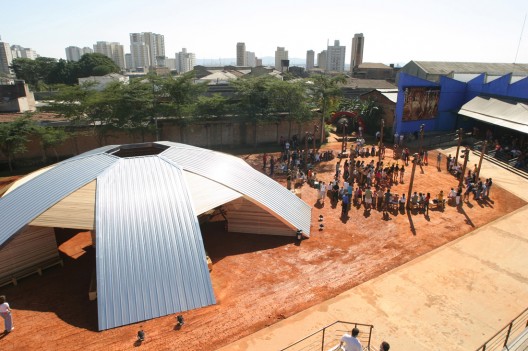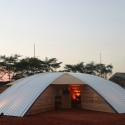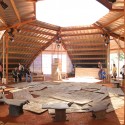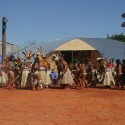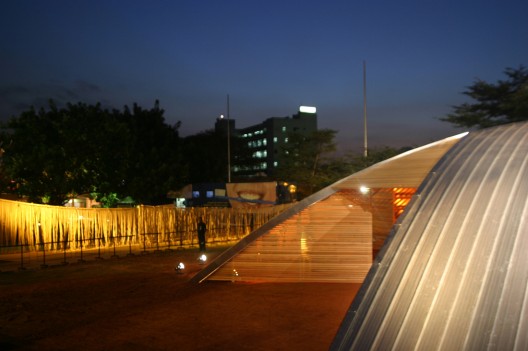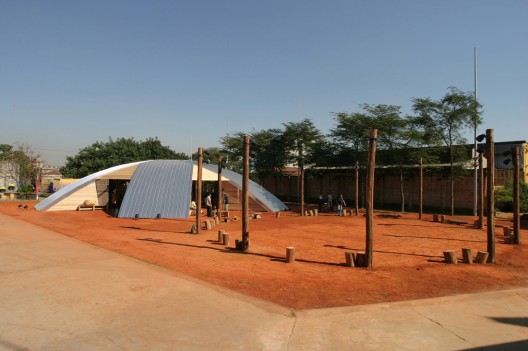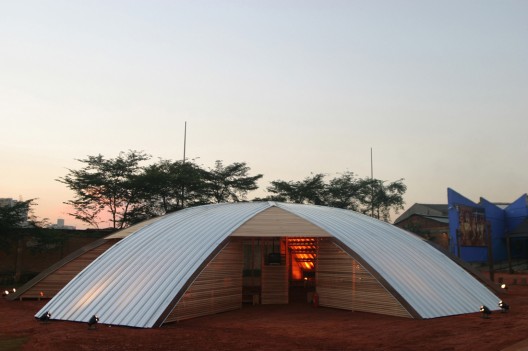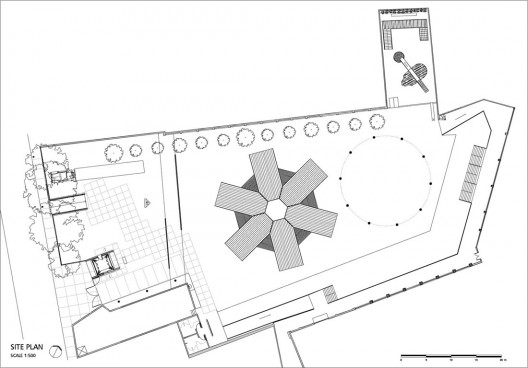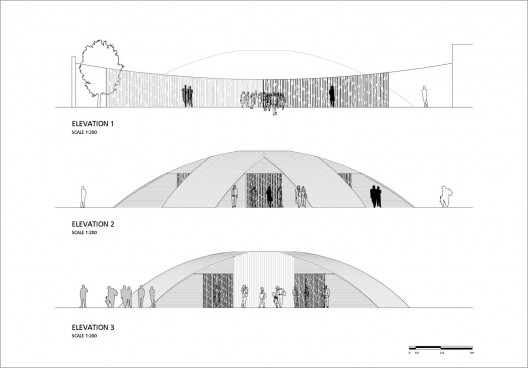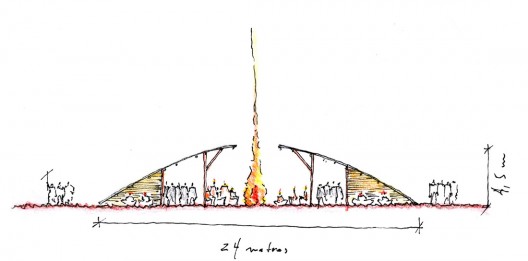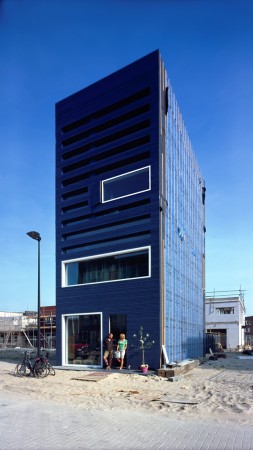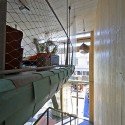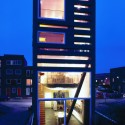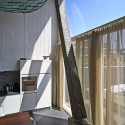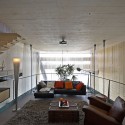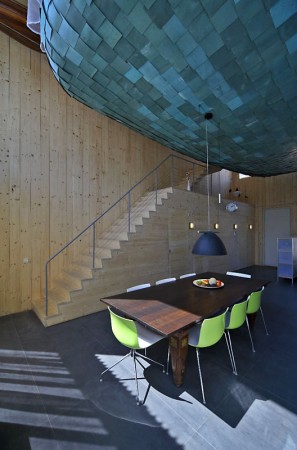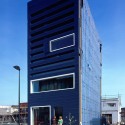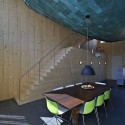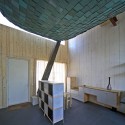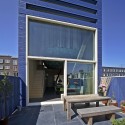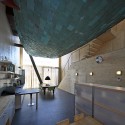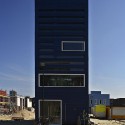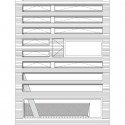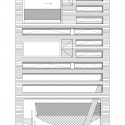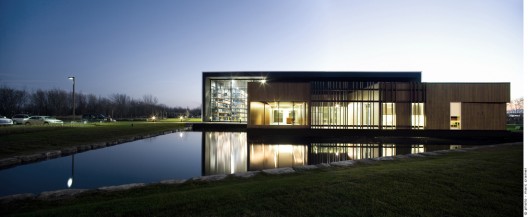
Architects: allaire courchesne dupuis_architecture_urbanisme_intérieur
Location: Quebec, Canada
Project Manager: Benoit Dupuis
Conception and head of Project: Maxime-Alexis Frappier
Project Year: 2008
Budget: 5,5 M
Photographs: Marc Cramer
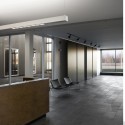
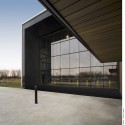
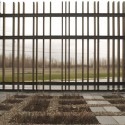
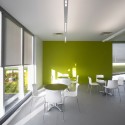
BACKGROUND
Experts in the manufacture of sanitary pipes and guttering since 1953, the family business handed down through generations sees the organization in constant growth. The company intends to equip itself with the latest installations to compensate for its lack of space and will be obliged to find new grounds in order to increase productivity and quality of service. In June 2007, St-Germain Égouts et Aqueducs decided to take action with the construction of its new head office in St-Hubert. With premises the young and dynamic management team predicts an opportunity to maintain competitive pricing while establishing itself as a force in facing the key issues of today.
The choice of site, for a business deeply rooted in the region since its inception, was obvious. Situated in an industrial quarter between the Highway 116 to the north and railway to the south, next to fallow farmland and adjacent to a residential zone. The proximity to the highway facilitates the handling of products and increases visibility to the public at large.
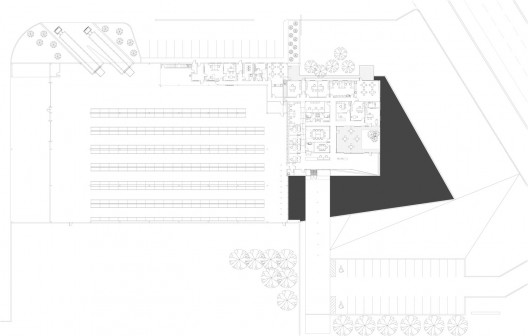
PLAN
The plan as per St-Germain Égouts et Aqueducs enables the company to manage four key areas: administration, internal warehousing, external storage and manufacturing. Given the scale of the organization’s production program, taking charge of all its components proved crucial to proposing a consolidated and independent project. Bringing about this new phase with in a harmonious manner affects the project as a whole and is at the very core of the concept itself.
CONCEPTUAL APPROACH
Building an industrial site that co-exists with the surrounding area, for a use in which architectural excellence is often replaced by low-cost banality requires a reevaluation of the topographical constraints of the location. Contemporary creativity, technology and innovative materials are available to respond to the desire to be distinct yet involved in the different issues of our time. It is important to ensure that these innovations generate neither cultural nor visual conflict but rather contrasting dialogues between the site, building and area.
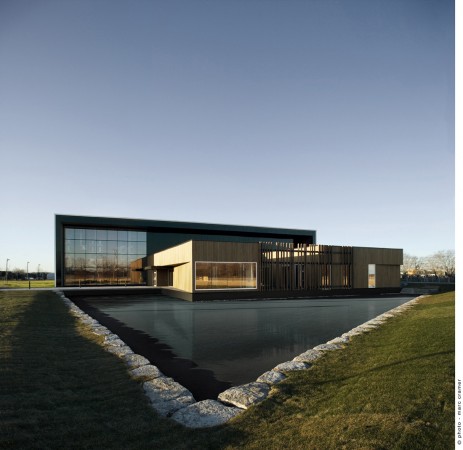
The site as a source of inspiration
The major part of the environmental impact of a structure rests in the laying of its foundation. The environment can be very easily taken into consideration and the edifice may be inspired by or entered into a symbiosis with it.
The site is situated on fallow farmland next to a highway and urban residential zone. The plan is to use the entire length of the land. This linear planning works with the existing conditions, road traffic and wind, for example.
To avoid disturbing or compromising the site’s natural character, growing locally plants will be integrated into the landscape design - for instance, a grass strip will be inserted, inspired by their presence on the land. The wood used for siding comes from reappropriated tree trunks that recall the forest that once existed there.
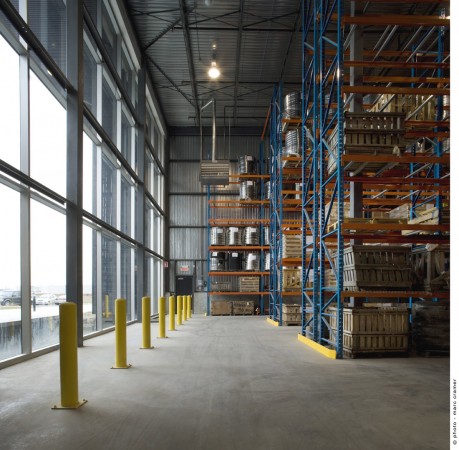
Sequential process of production
To offer innovative construction, the substructure draws inspiration from the essence of industrial design. Thus the production sequence will be another source of inspiration for the project.
The layout reads like a canal connecting the diverse production functions and highlights each stage. The majority of projects of this ilk eventually show signs of irregular growth or lack of forethought. This is resolved by joining the various stages to create a uniform language from the outset.
Company Image
The edifice must reflect the image and goals of the business, conceptually, this is conveyed by the enveloping pipe which assures the transition between the different functional spaces. This representation is not haphazard as it also recalls the company’s product: rain and sanitation pipes.
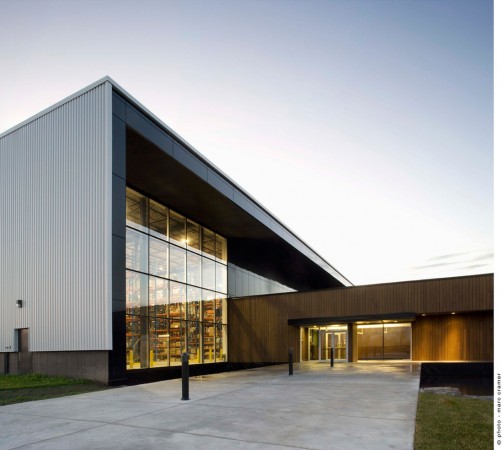
Visually, the building appears to be flowing through the canal, a precious wooden box floating in a water basin. The volume of the wood illustrates a dual intention: one, the path of the product through the sequence of production, from the factory to administration, passing through the warehouse zones, two, it is the reflection of the people who work there. The roasted wood coating represents the humanity and congeniality of the family business in contrast with the austere rigidity of its concrete product.
The water, inherent in drains, is found in the basin in which this wooden office floats and is fed by rainwater and runoff from the roof and grounds. Other materials will connect the building with its typography; the use of corrugated metal panels form the core of the “canal”. The colour and luster of these materials will complete the concept. The white of the warehouse mats against the glossy black interior reproduces the idea of a shimmering basin of water while creating the effect of depth.
Form
The shape of the building is simple, orthogonal, straight and clearly identifies its contemporary architecture parentage. The form is at the service of the idea it transcends: the simple, straightforwardness of the shell conveys the image of the drains. The wood edifice, like its occupants, is flexible and reacts to the natural forces of the site. The predominant North-East winds promise a refinement and articulation of the façades. Eroded by the wind, the north-east section becomes truncated forming a group that is integrated into the site.
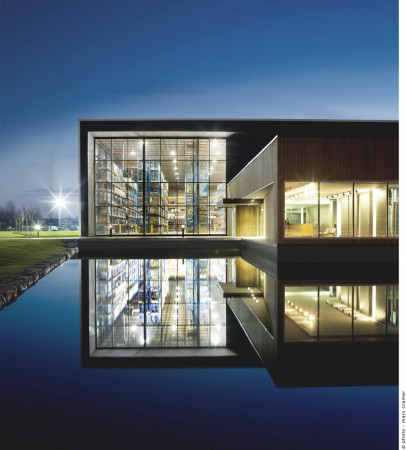
Visibility
Visibility is one of the fundamental issues of the project. Indeed, since the premise of the project is that the new headquarters becomes a showcase, a democratic place where the know-how of the company is manifest. A showroom, adjacent to reception, houses a permanent installation of the company history and its range of products will open soon.
To show the process of production, there are windows to the different phases. The ability to peer into the process, from conception to administration, is made possible by these slips and openings within the “canal”.
Architectural promenade
The entrance
The entrance of the building is located at the far end of a concrete footbridge “floating” above the basin. From this bridge one is able to appreciate the glistening effect of the basin upon the lustrous metal panels and glass wall of the warehouse. This large window allows for viewing of the warehouse activities.
A recess in the façade articulates the entry. Furthermore, a canopy projects outward from the entryway accentuating the ambiguity and continuity of the indoor/outdoor passage with the use of grand windows, roasted wood and black slate floor.
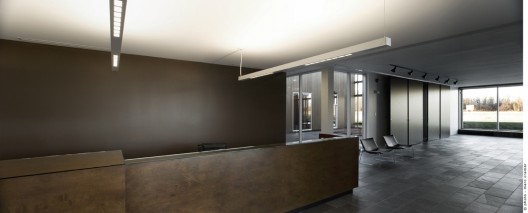
The Hall
After crossing the footbridge and walking along the large window overlooking the warehouse, one accesses the administration department through a retreat in the wall of wood. At the entry, a large dark wood reception desk serves as a welcome directing visitors to the exhibition space displaying the company’s top products. Following on the perspective one can see the interior courtyard, access to offices and conference rooms. The space is fluid and punctuated with views of the landscape.
Sliding walls
The workmanship and materials making up the administrative space contrasts with the tubular simplicity of the warehouse. The space is covered in wood, bringing to mind the warmth of home and the family unit that is the management. The sculpted recess protects the entrance from weather and a niche to accommodate the interior courtyard, with sliding walls extending the length of the meeting area to allow communication between the interior and exterior, and a second wall forms a lath connecting the layers.
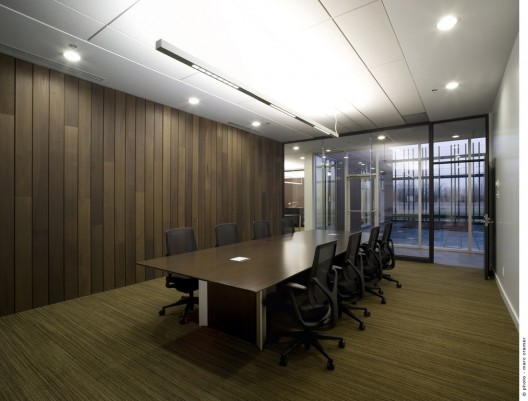
Wood volume
The administrative spaces are constructed in a precious variety of wood contrasting with the raw materials of the company. This roasted wood space is sculpted by the environment and appears to float on the reflecting pool.
Being close to the basin, the outdoor landscaping and the indoor garden can be enjoyed both from the work units and the various community spaces and the entrance. A clear base colour reflects the light and brighter colours ponctuate moves and displacements. Some of the interior walls are covered in the same roasted wood framing the windows bringing the exterior in.
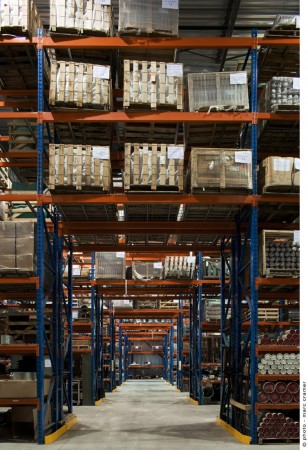
The warehouse
Due to the proliferation of large “depot”-type stores, the spacial typography of the warehouse is not unfamiliar to the public. The large aisles with concrete flooring and giant shelf structures fit the scale of the supported products and use of forklifts. In this kind of large space, by virtue of its imposing dimensions, practicality reigns over aesthetics. These functional requirements do not, however, interfere with quality of the space as it is also a workplace to a great number of staff.
This is why, since the conception phase, the challenge of the warehouse space has been for the concept of its transparency and openness to the main entrance. The window permits visibility of the production line and finished product before entering the administration area, enabling natural light to flow through the building and offering views of the landscape.
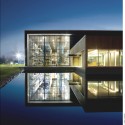
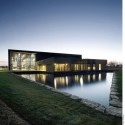

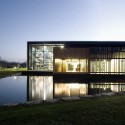
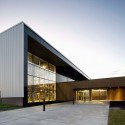

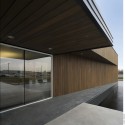
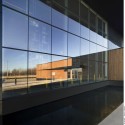


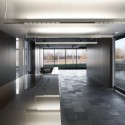

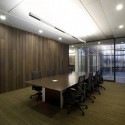
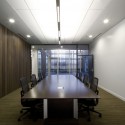

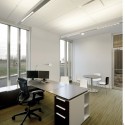

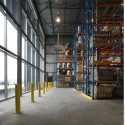

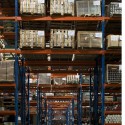
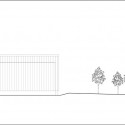
- elevation 01
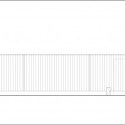
- elevation 02
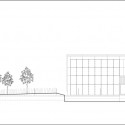
- elevation 03
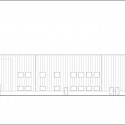
- elevation 04
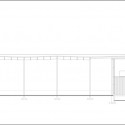
- section

- situation plan
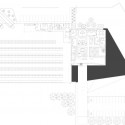
- site plan
